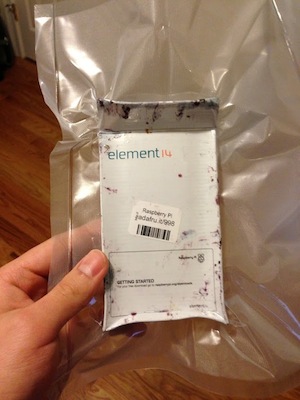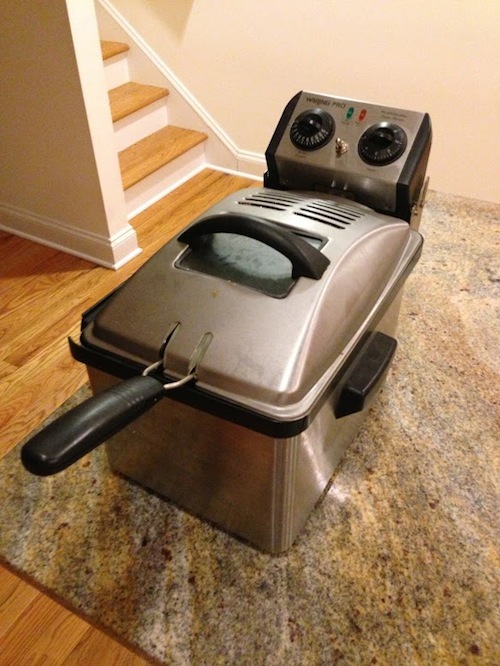For Valentine’s Day, I surprised Liz with an iPad Mini. We were selling her current Macbook Air because it just didn’t have the power to run Solidworks, Autocad, and other technical programs she’d soon need for her engineering/design classes. However, she attached a fair amount of sentimental value to that particular Macbook Air (it was another surprise gift from me). I figured I’d at least update the sentimental value with the iPad because it filled her need for a portable device and she had liked the Mini when we visited an Apple Store recently.
For her gift, she surprised me with a Raspberry Pi. In a pie.
Apparently, she had searched for a good “pie proxy” as a presentation tool for the Raspberry Pi but eventually, for lack of a better option, settled on an actual pie (blueberry, but close enough). I don’t have a picture of the pie, unfortunately, but I do have a picture of the blueberry stained box, which I vacuum sealed afterwards in case I needed any of the numbers on it (it’d otherwise be sticky and good luck cleaning off the box without destroying it).
 I suppose this might have been a problem if I needed to return it.
I suppose this might have been a problem if I needed to return it.I suppose we’re a bit of an odd couple, but I wouldn’t have it any other way.
